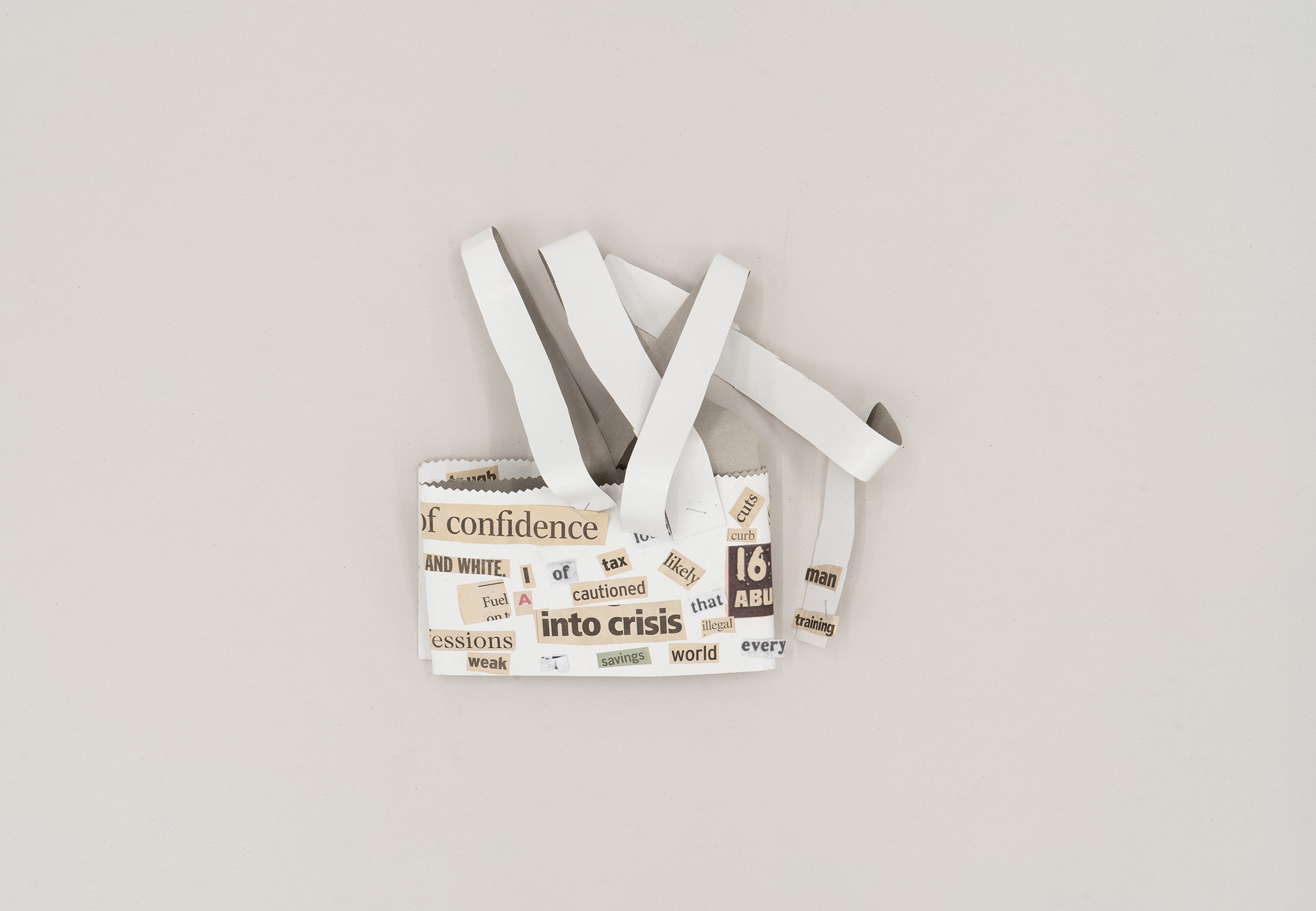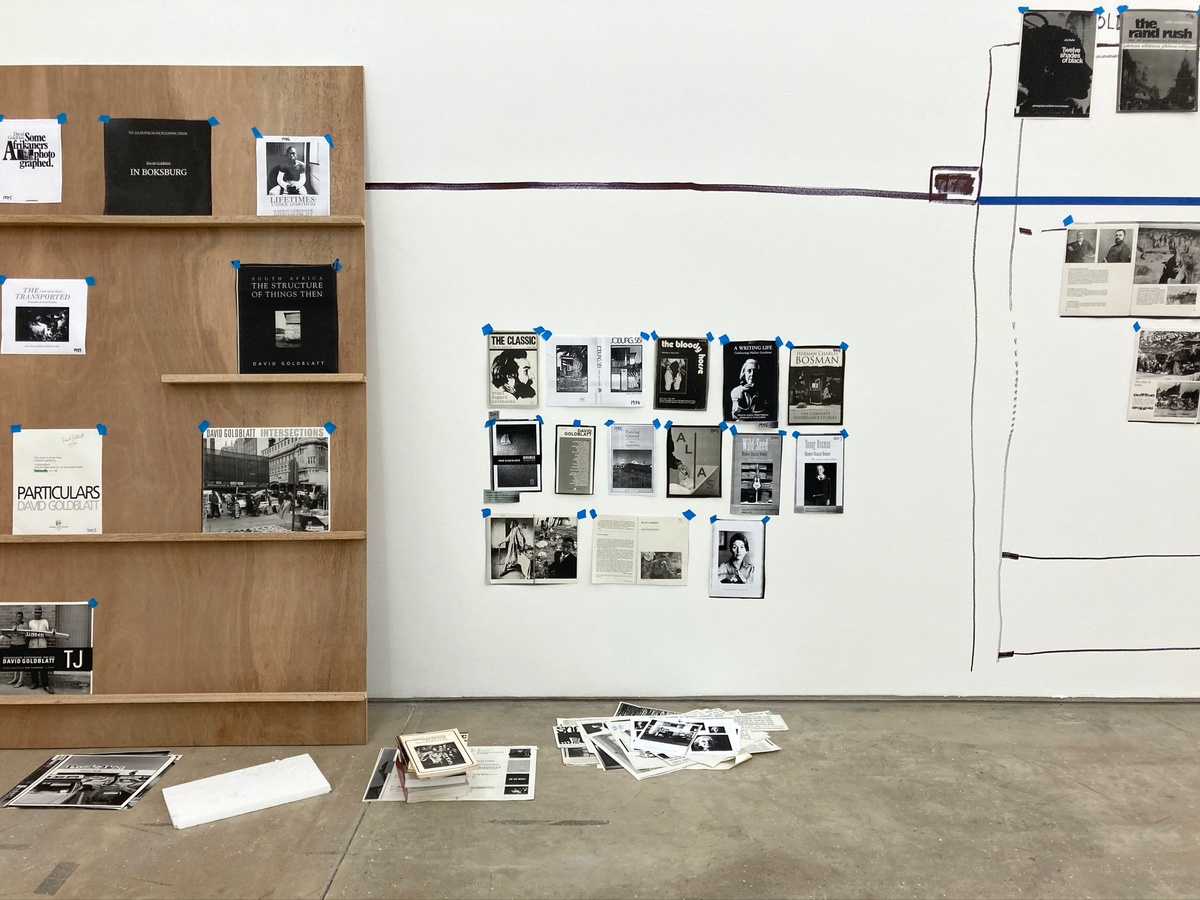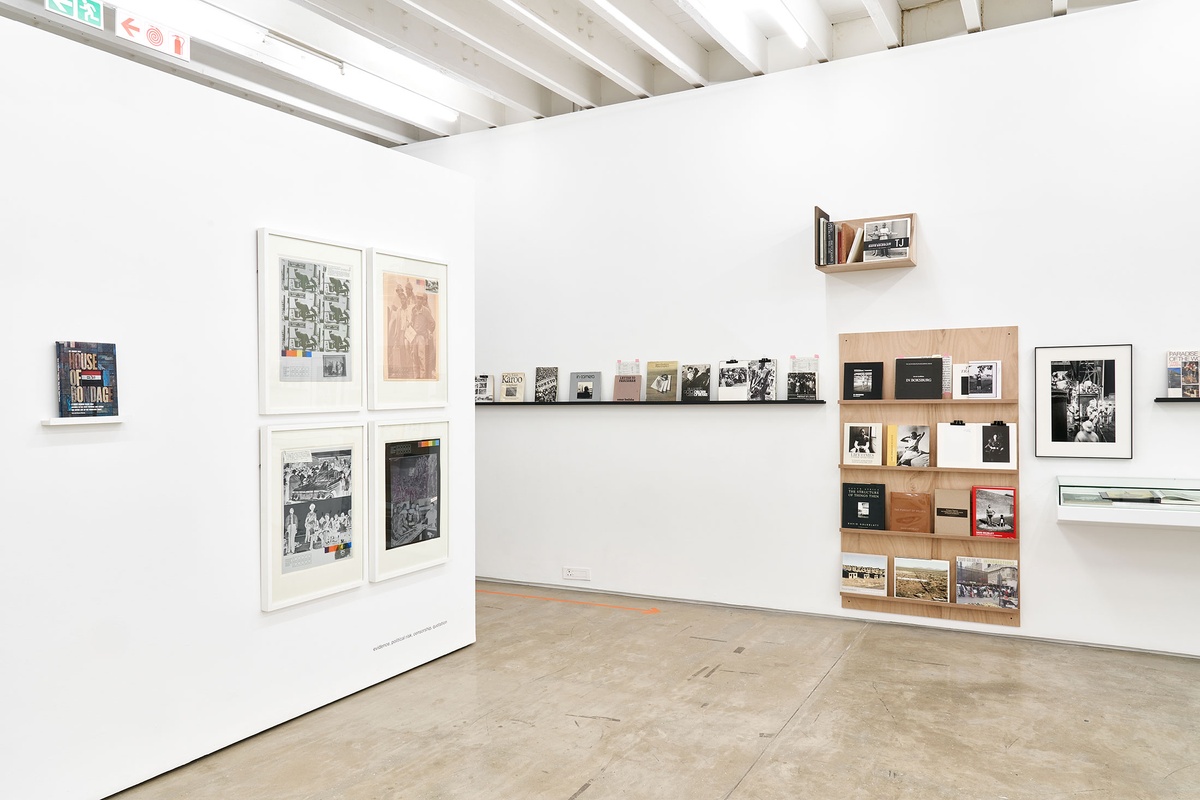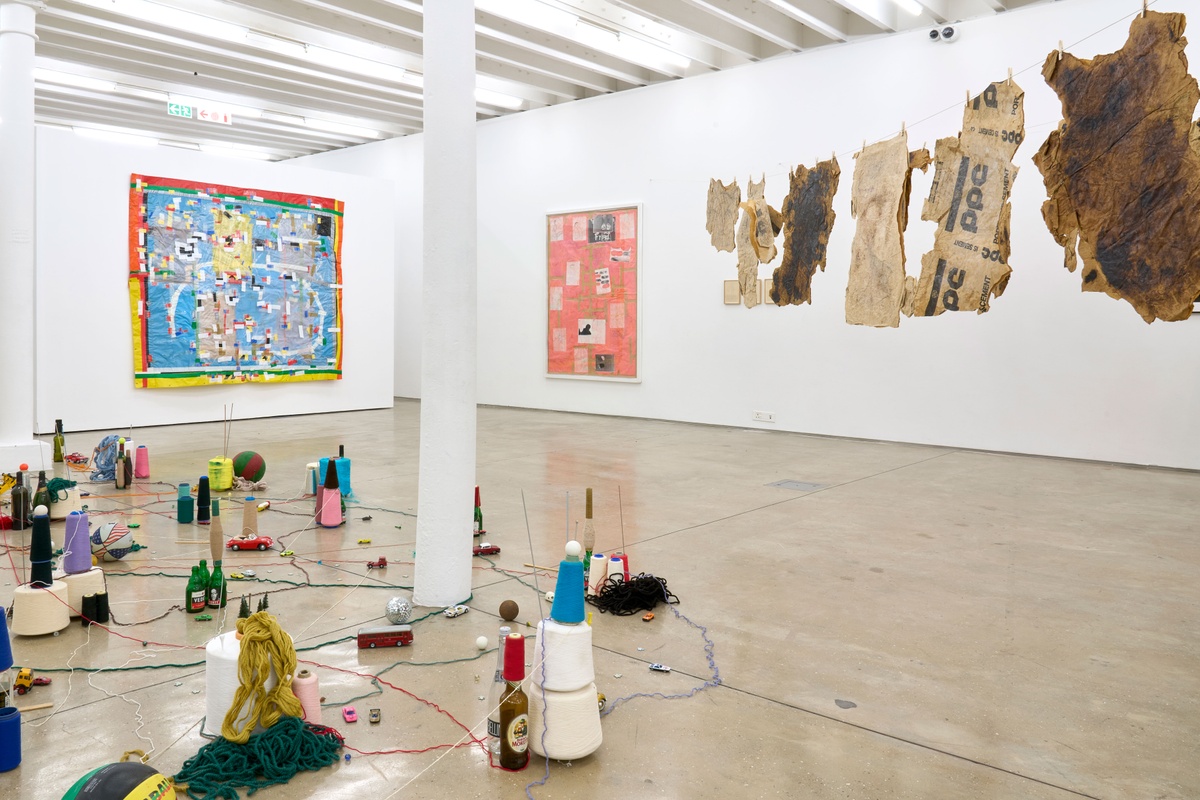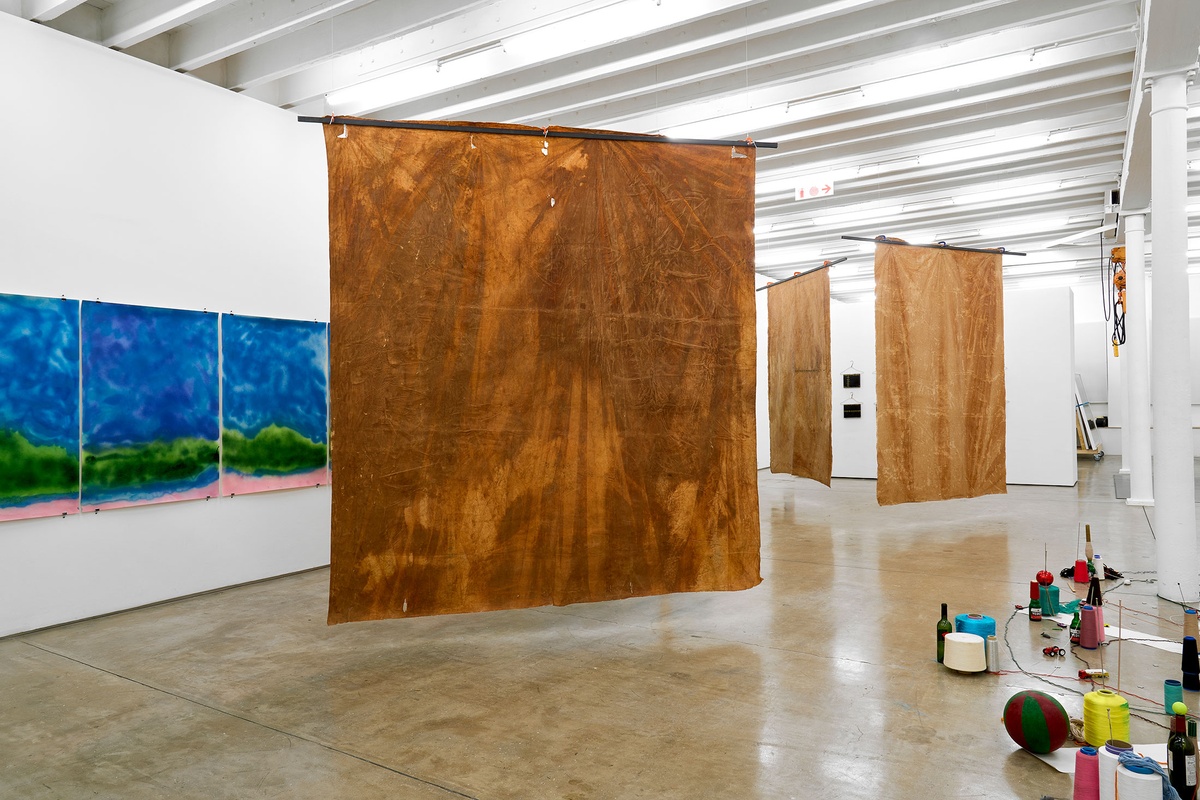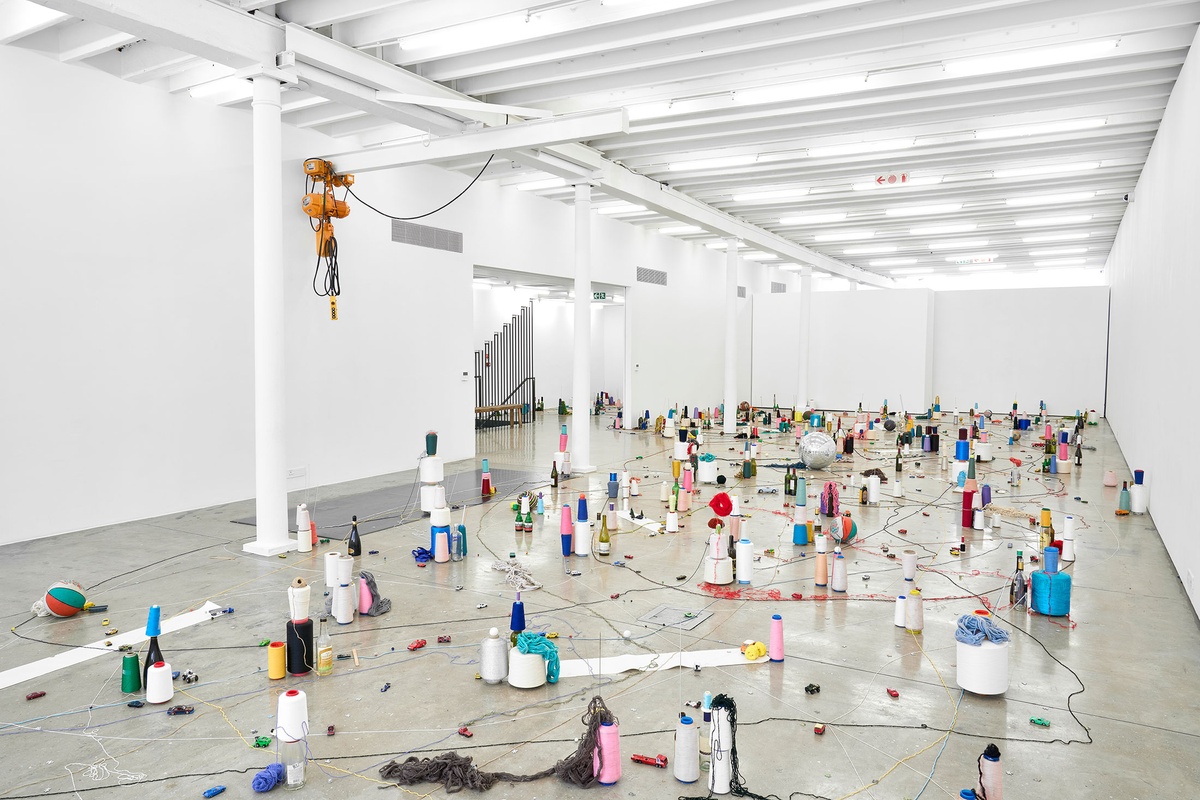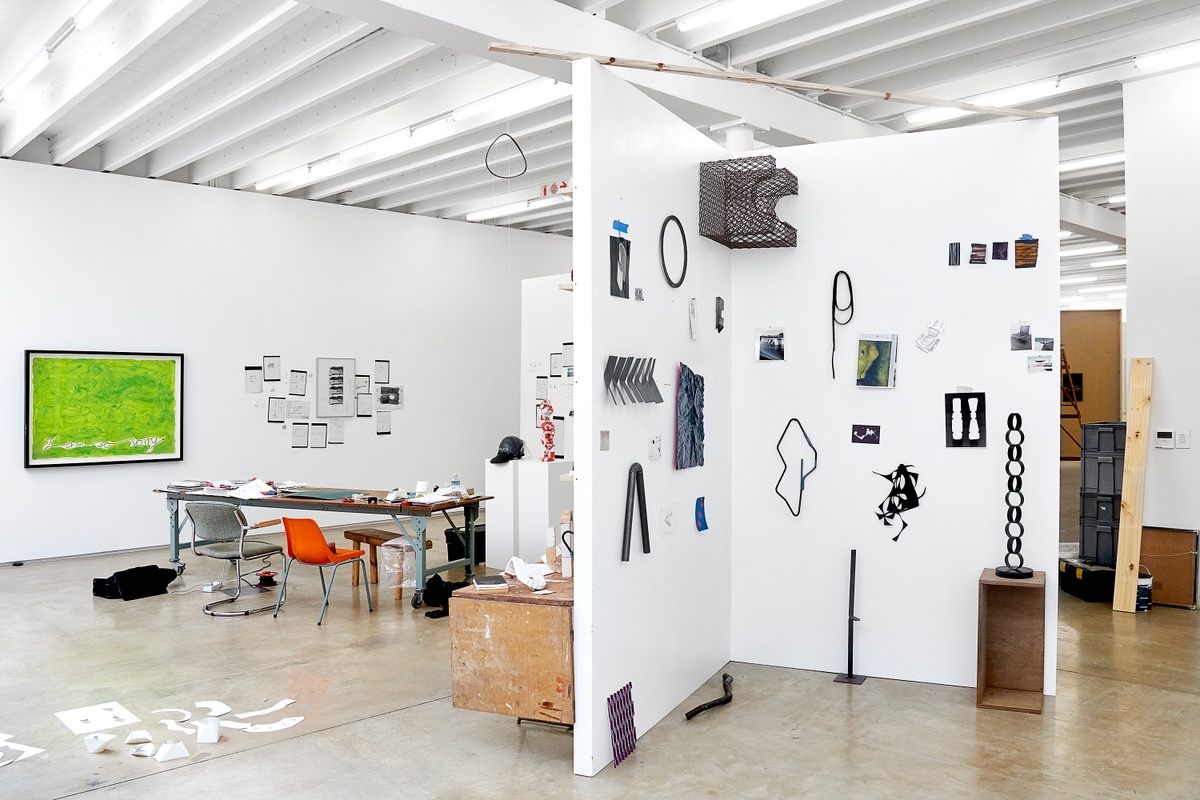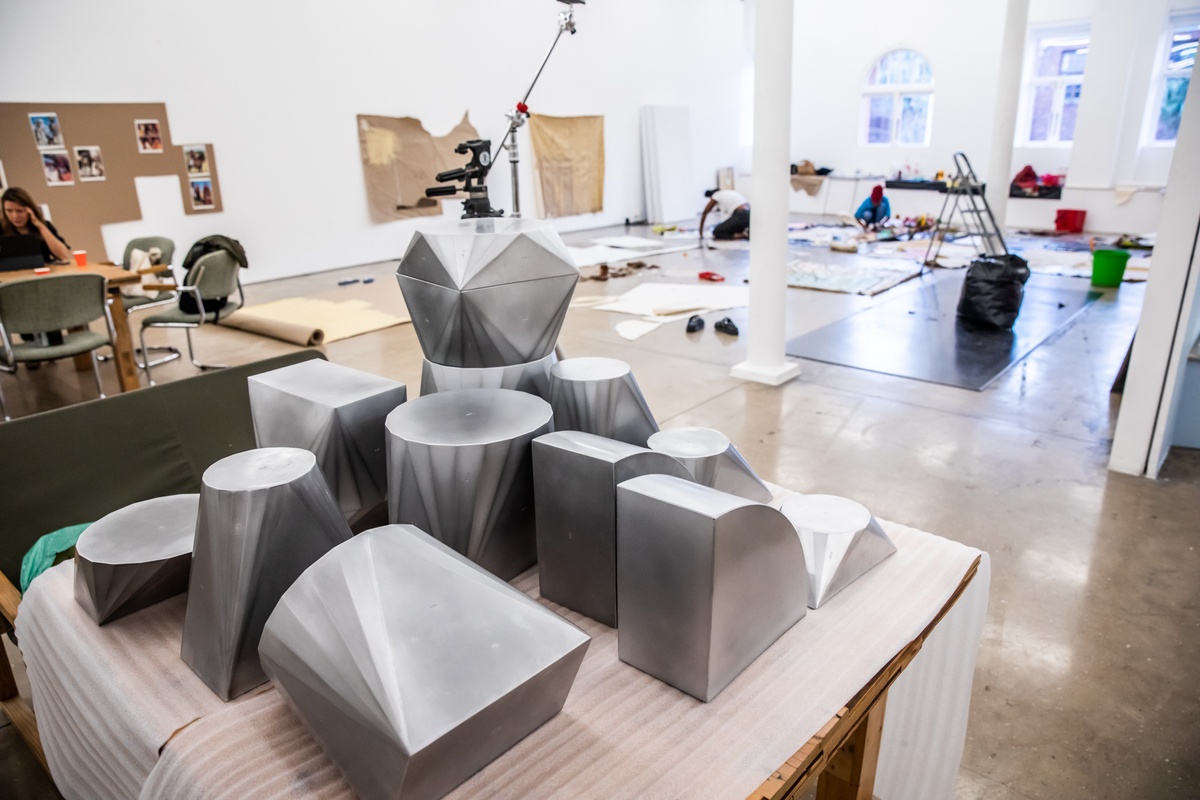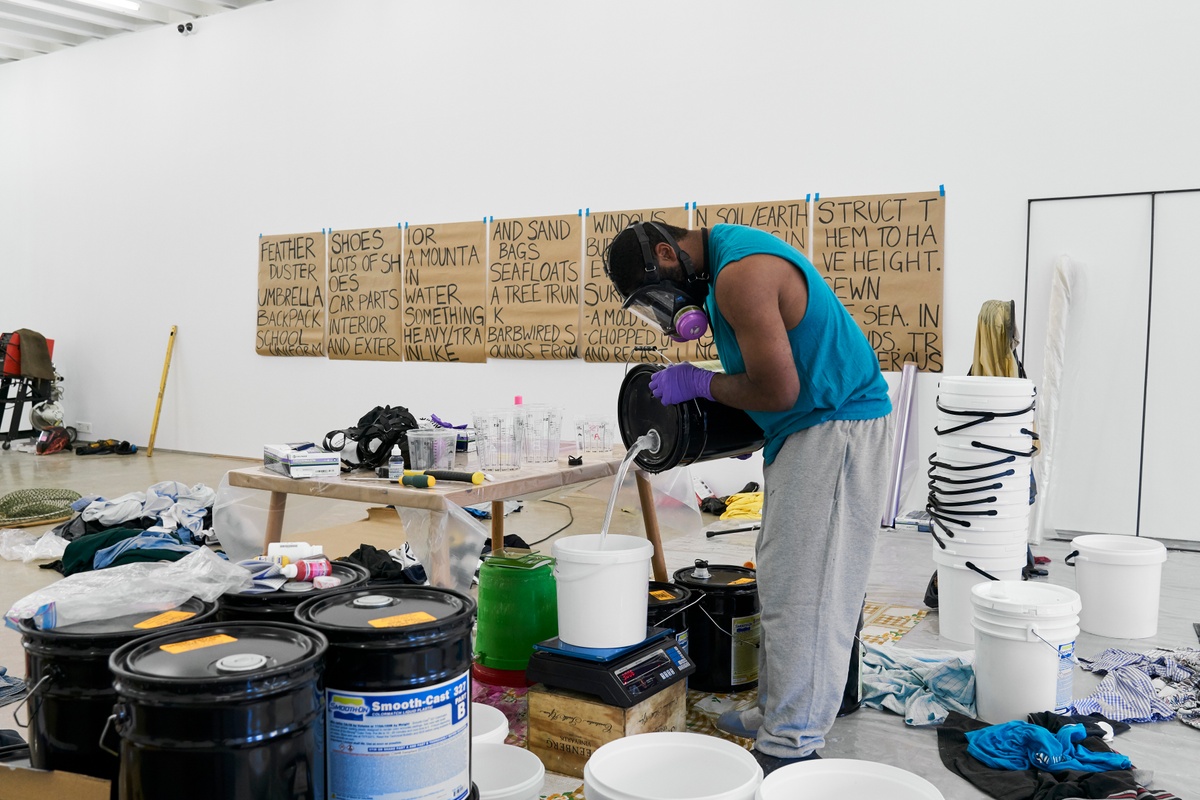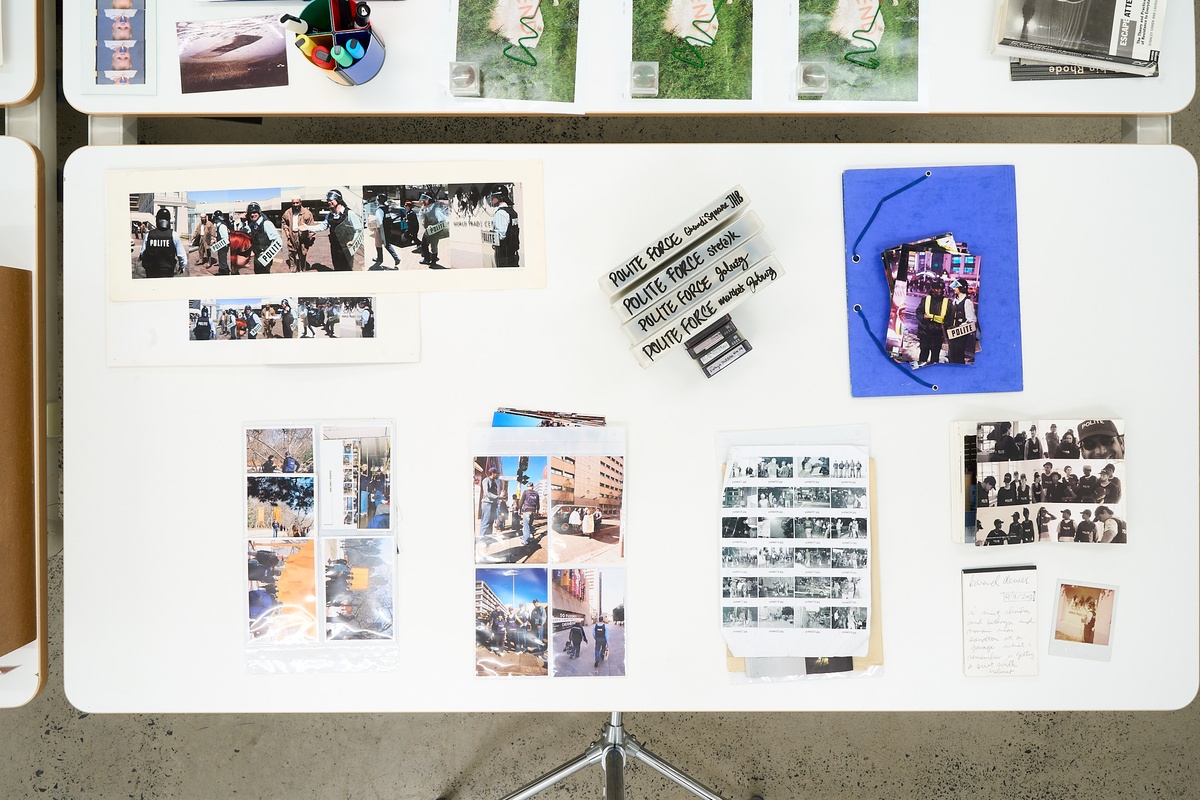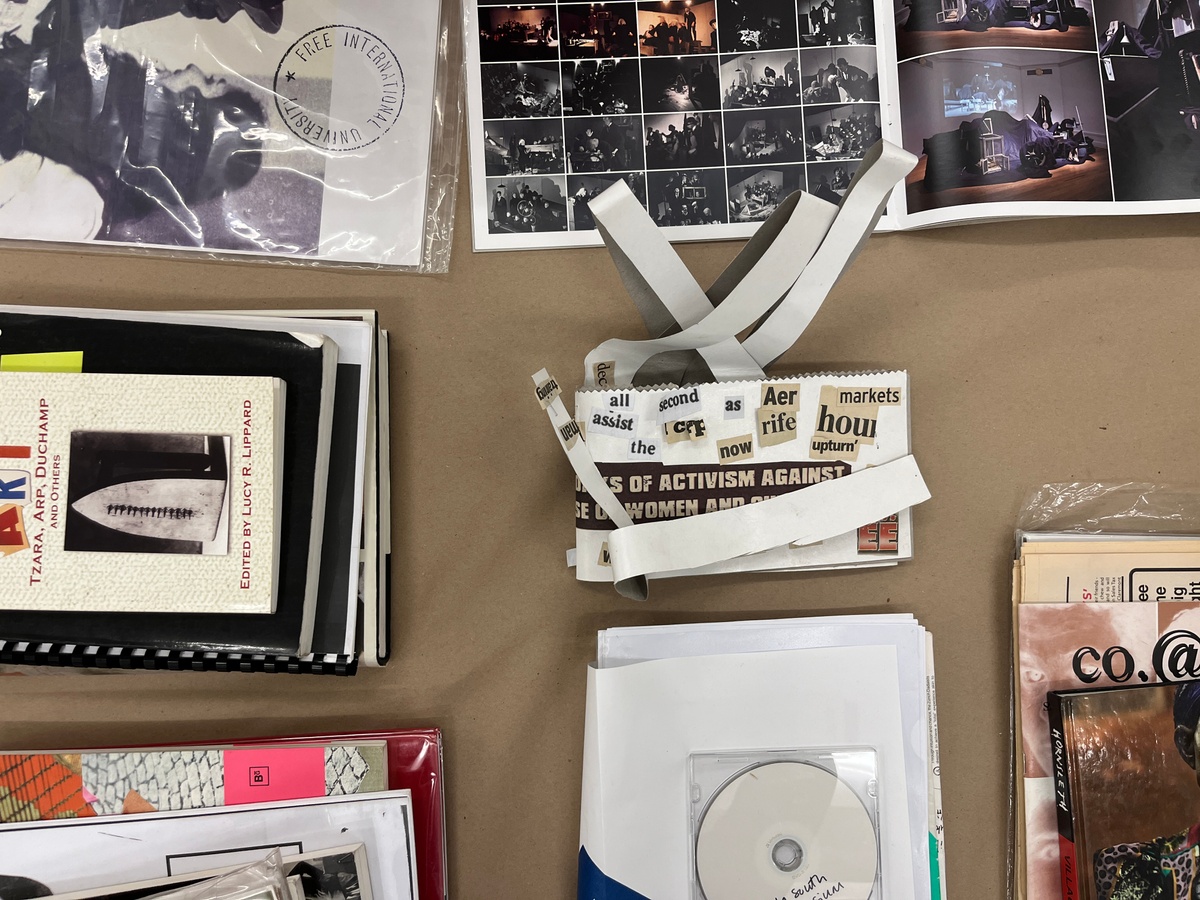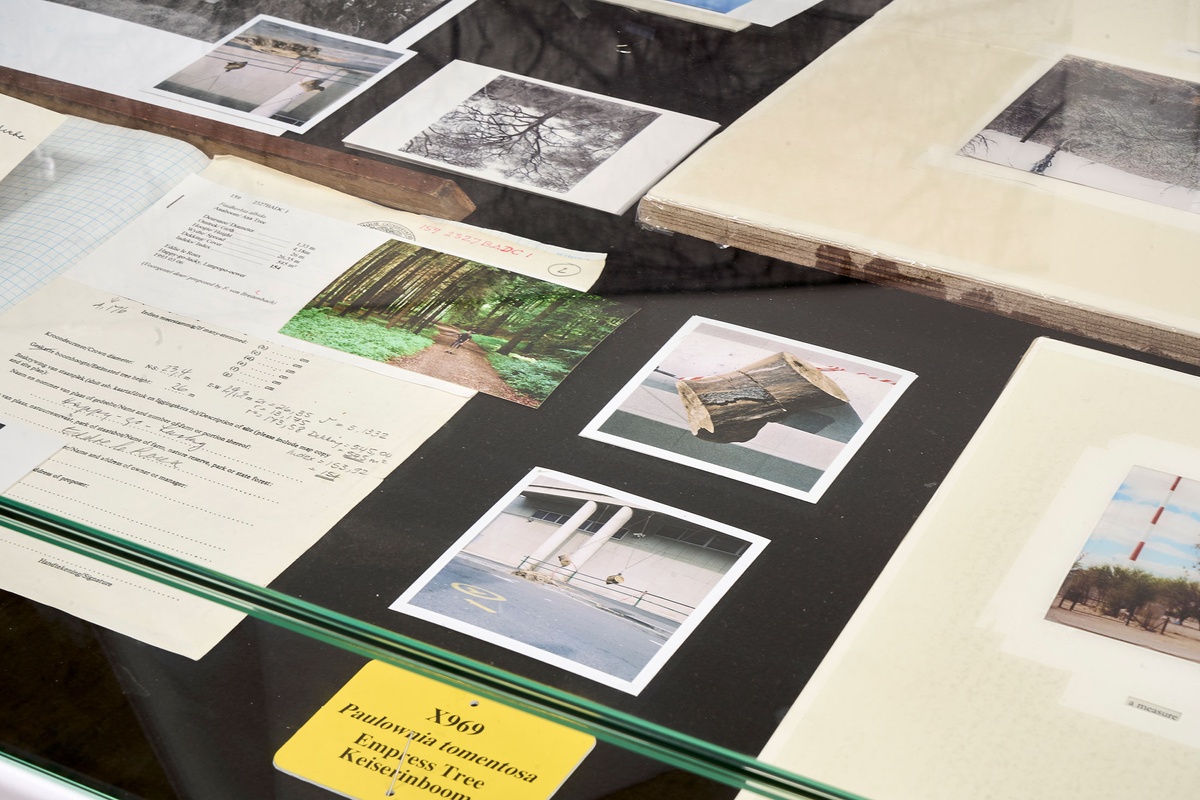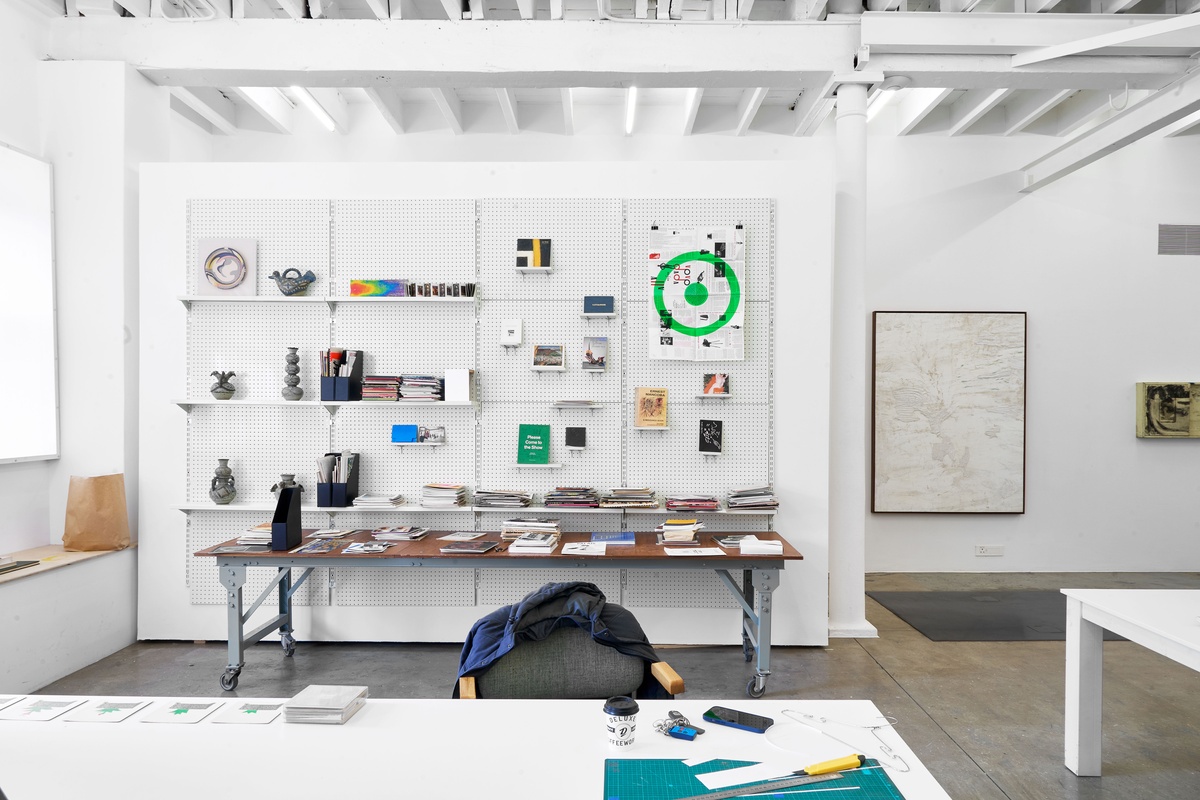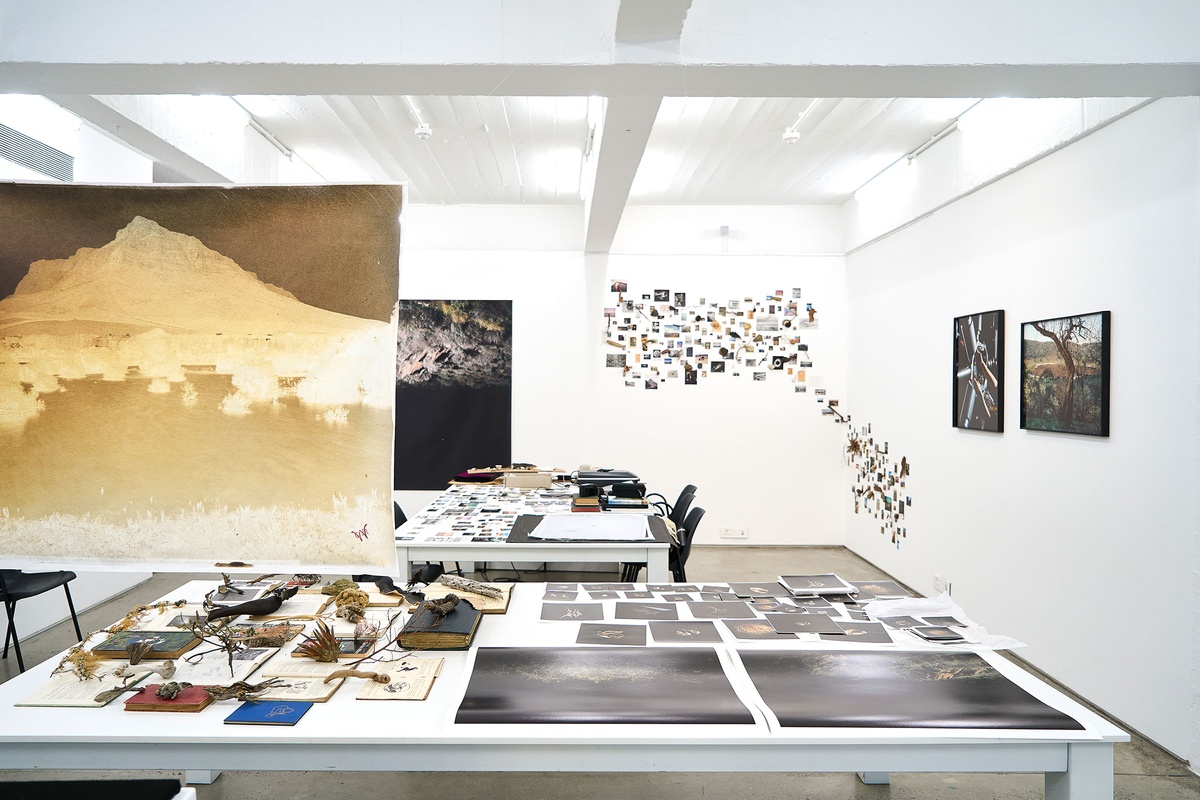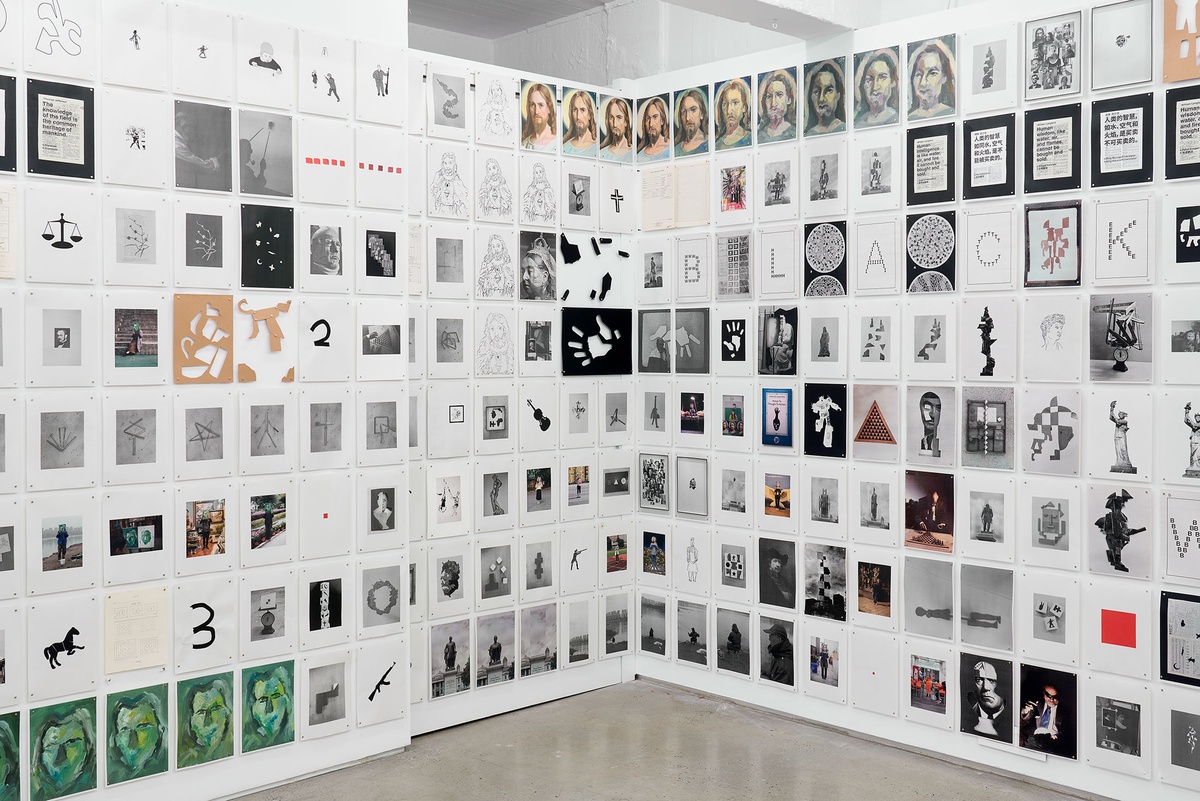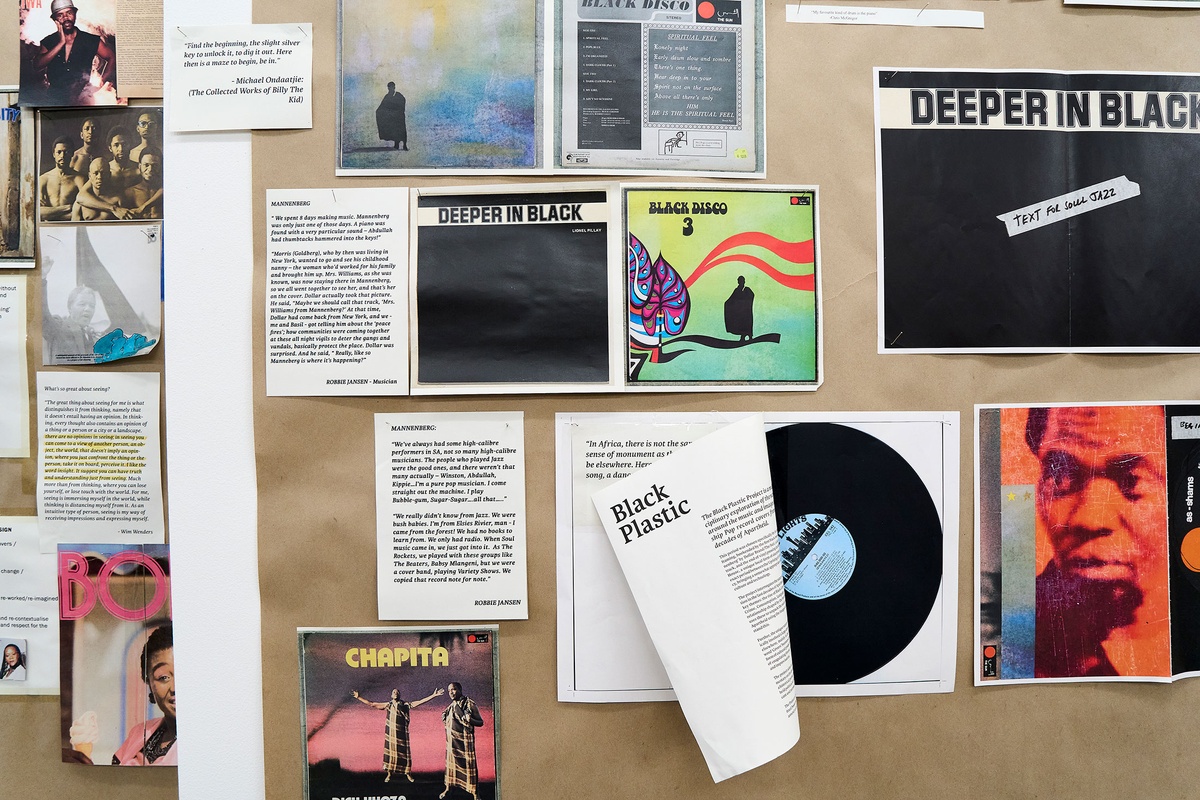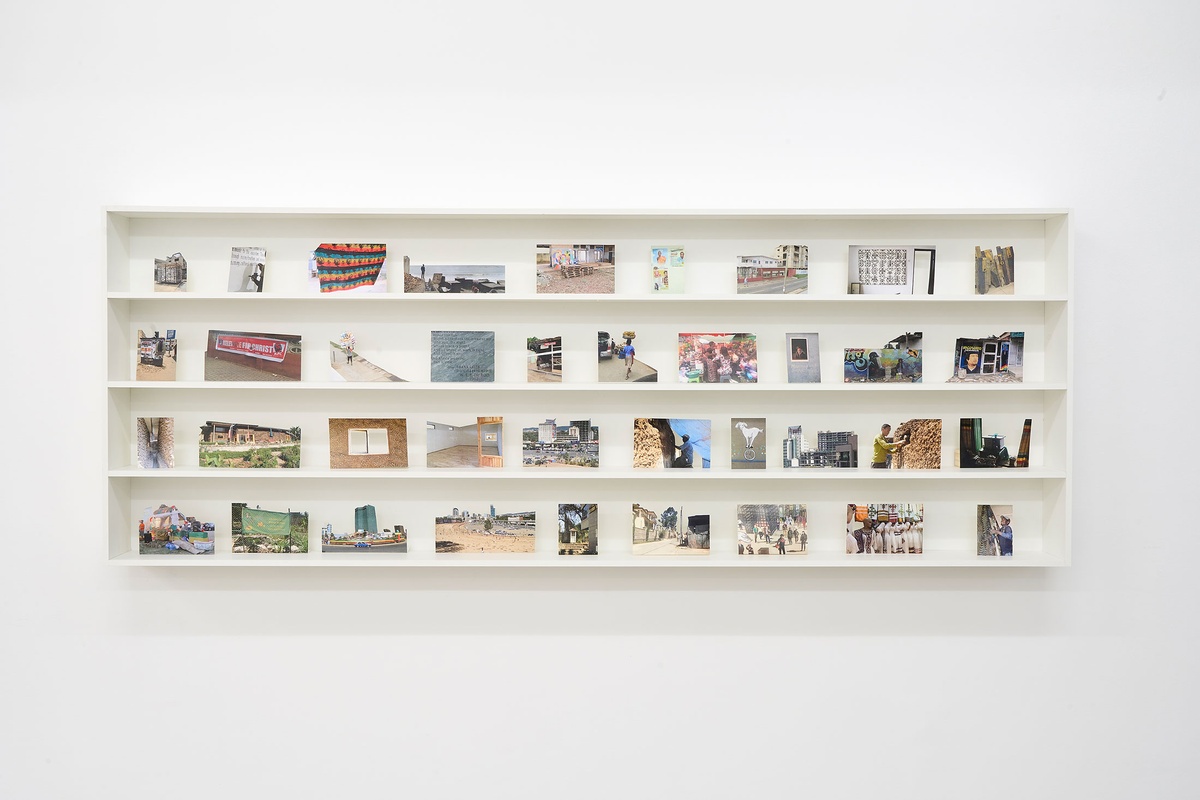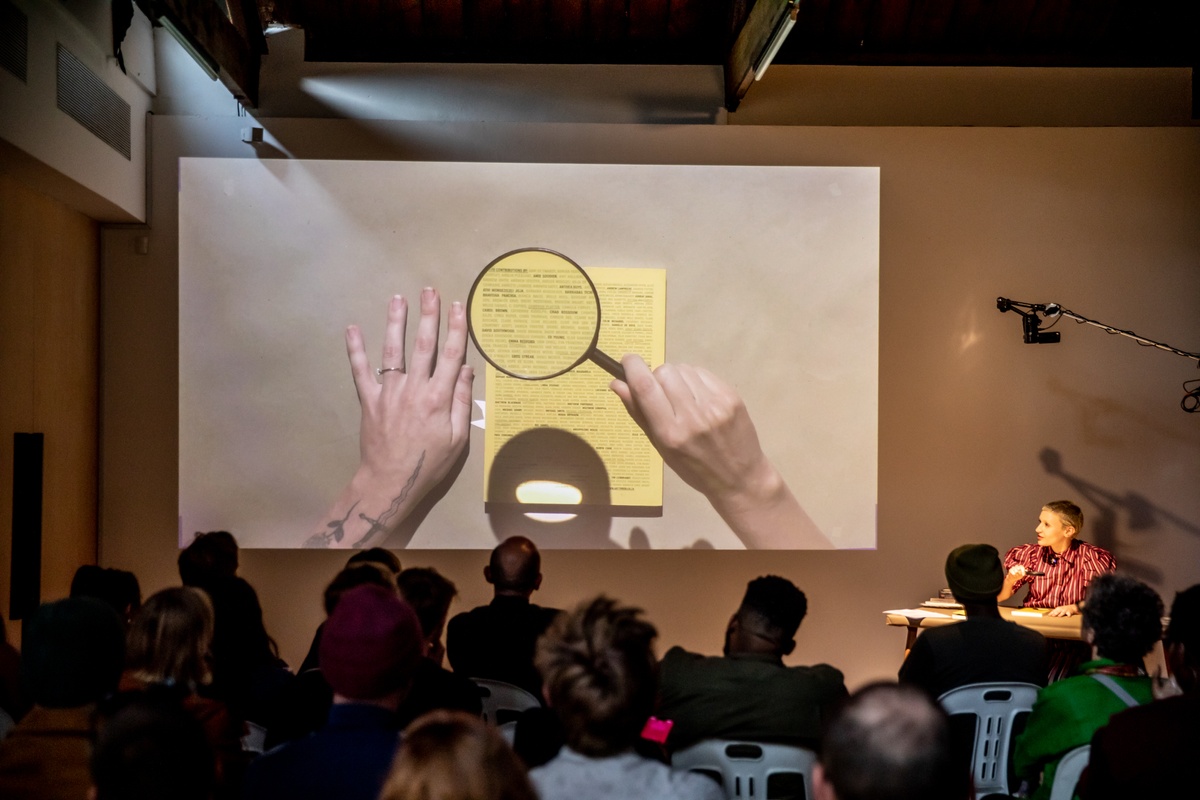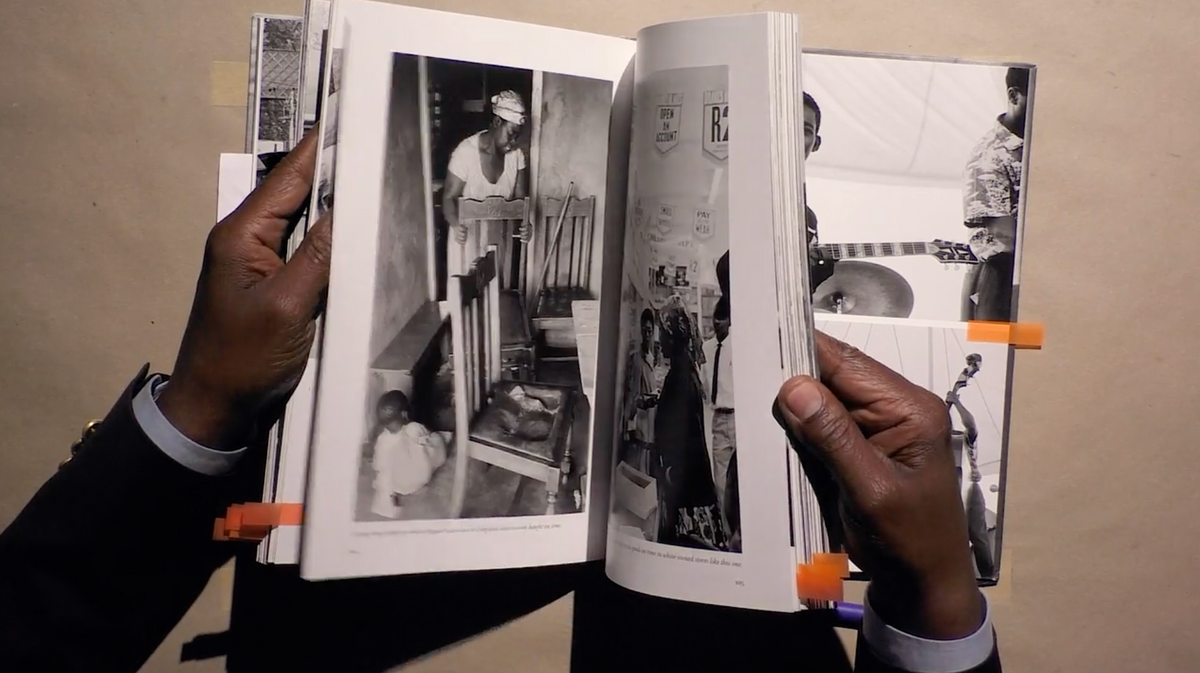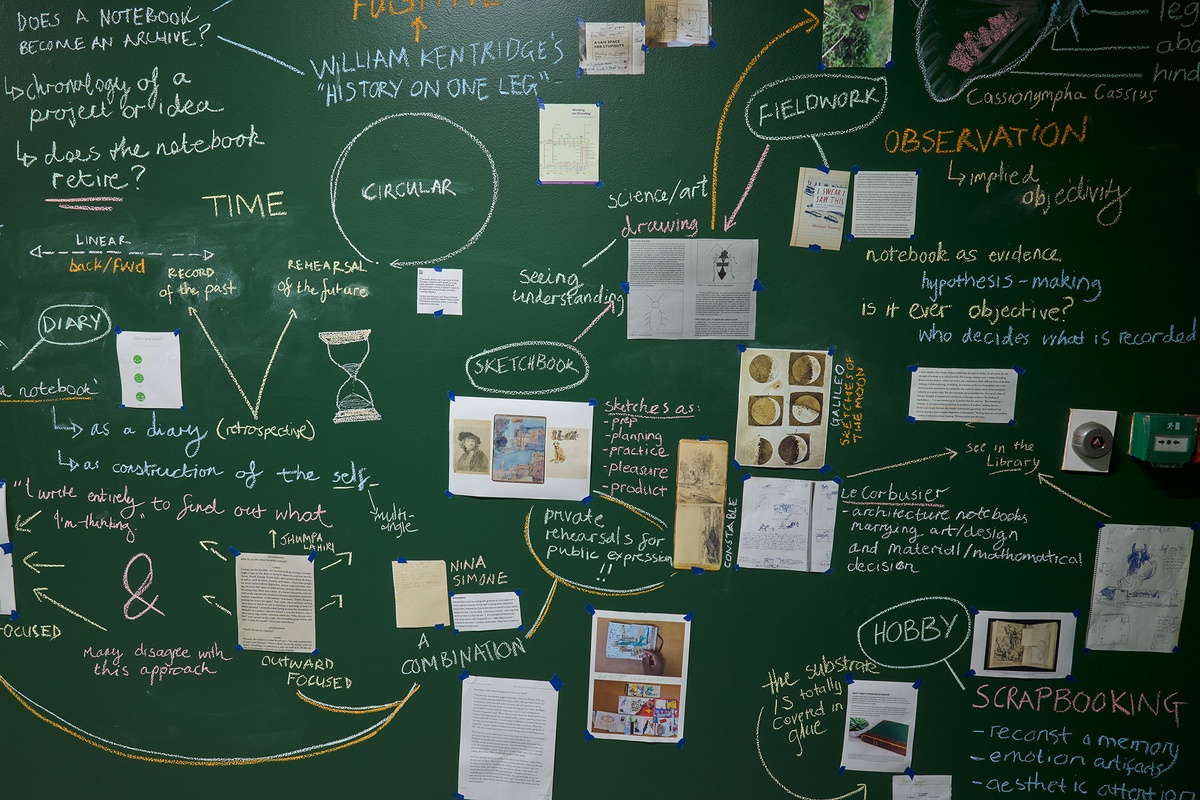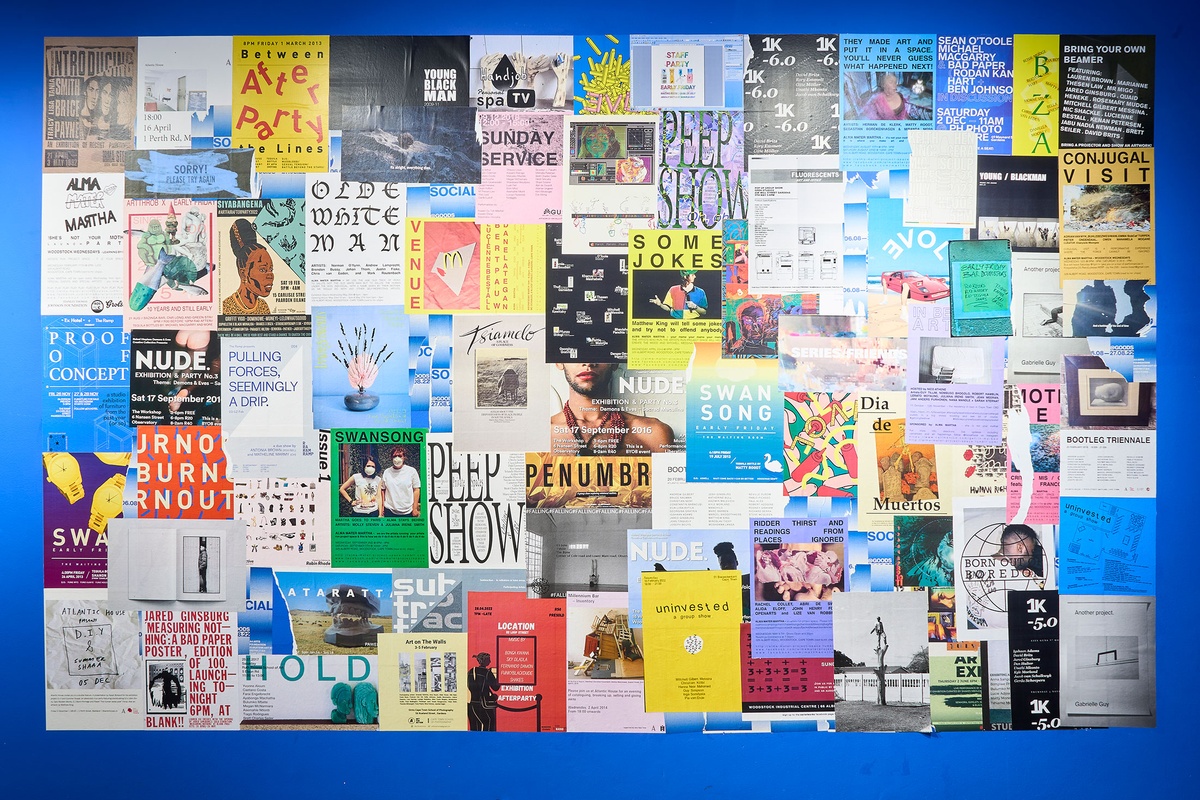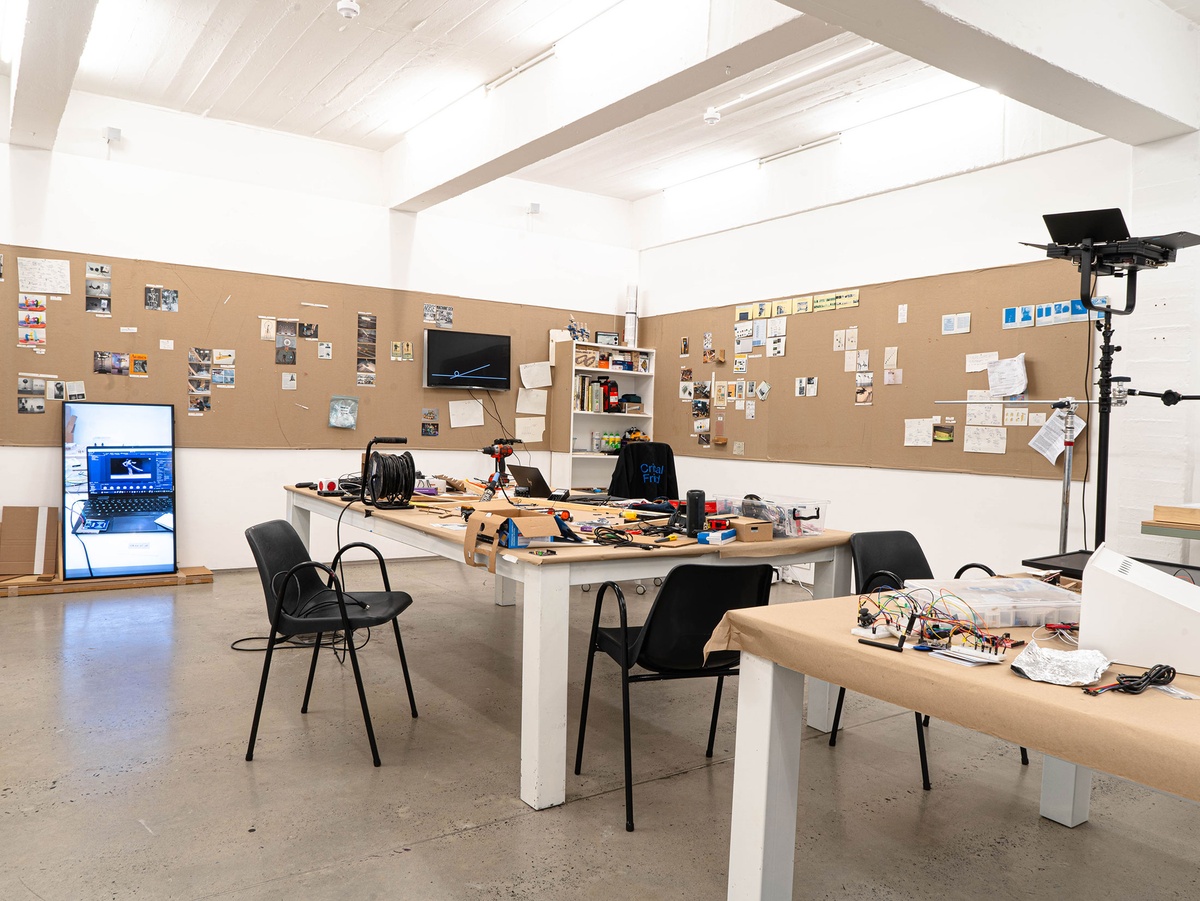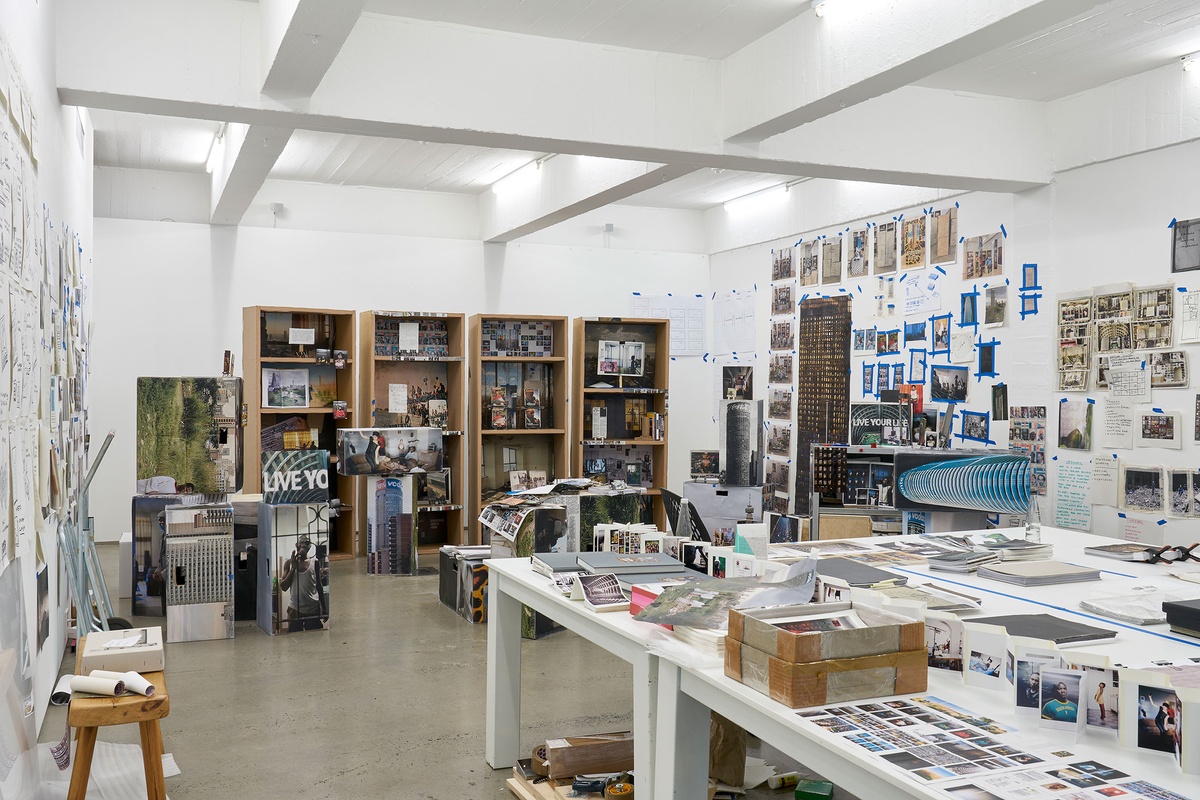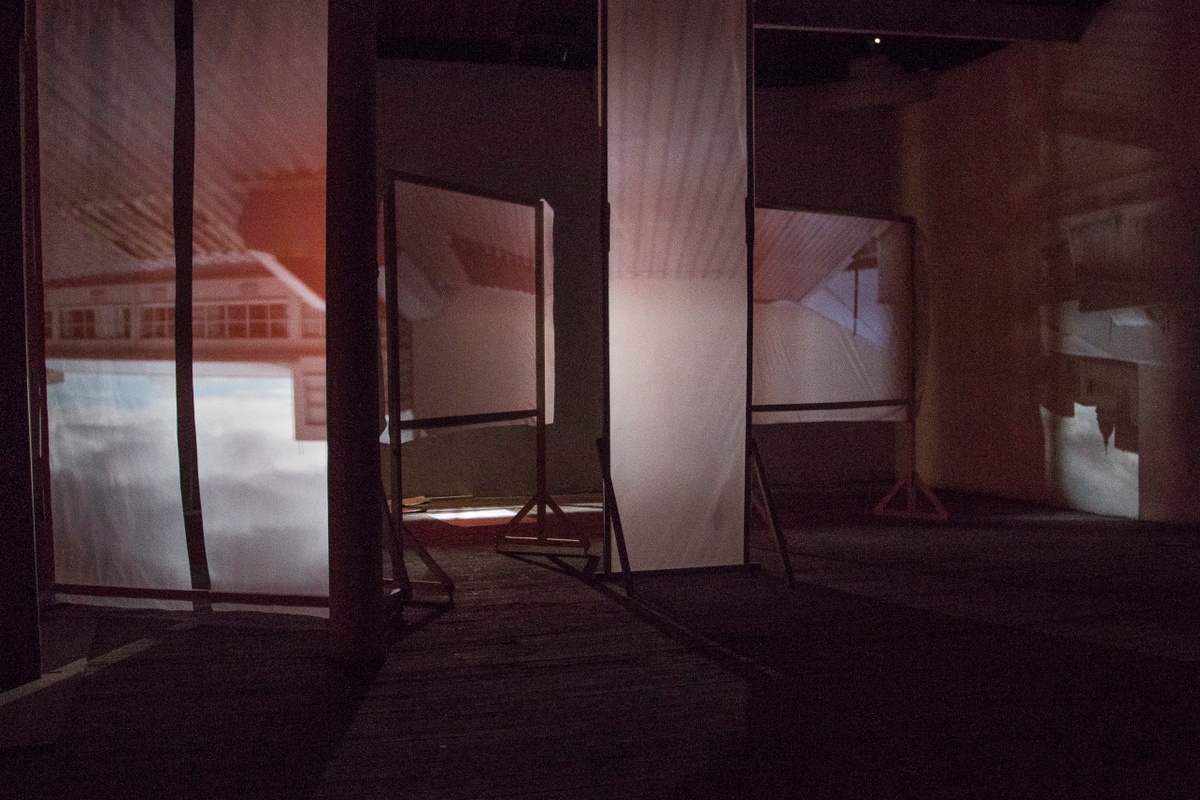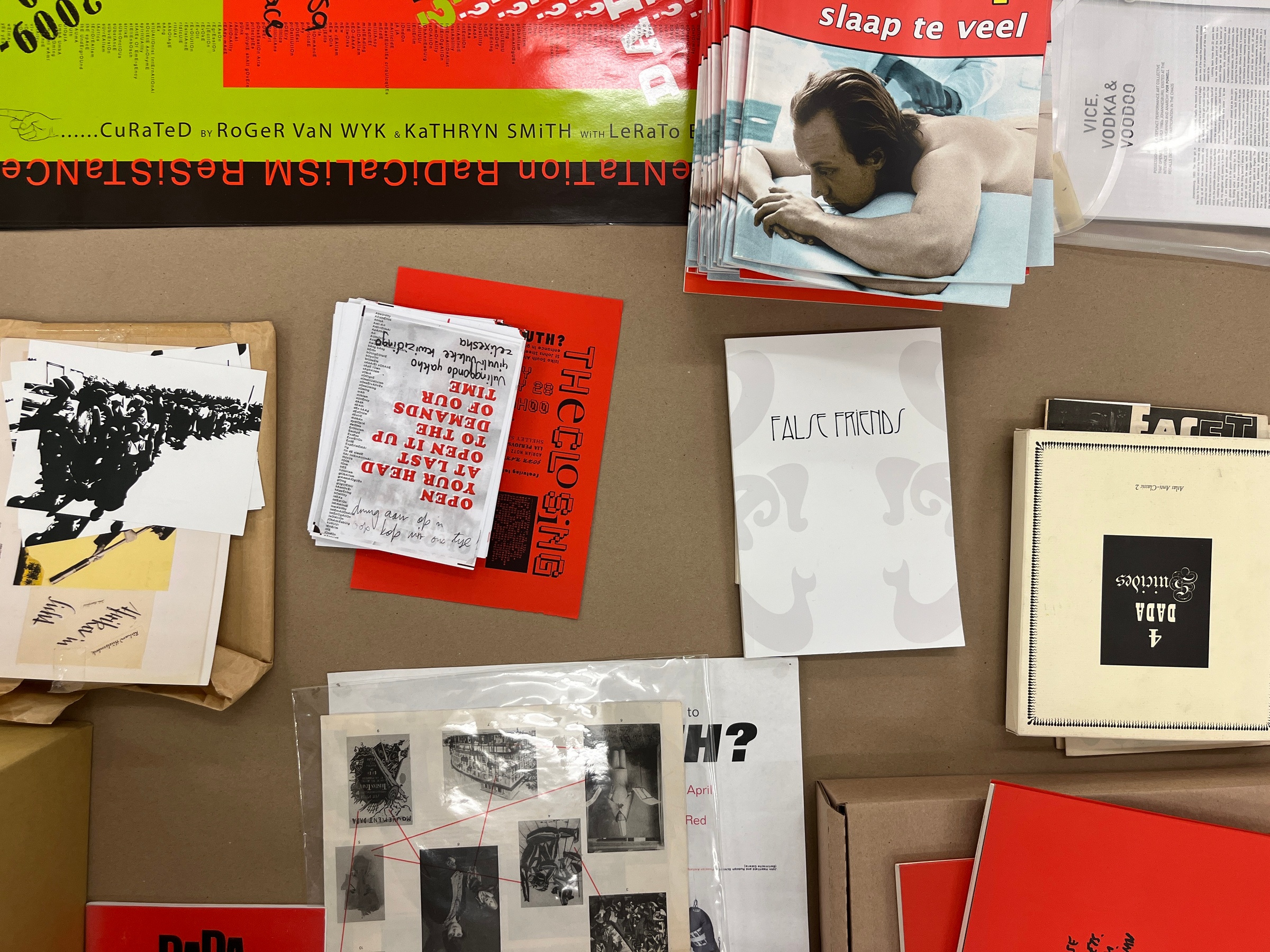
Dada South?
Experimentation, Radicalism and Resistance
December 12, 2009–February 28, 2010
Iziko South African National Gallery
Curators:
Kathryn Smith
Roger van Wyk
Assistant Curator:
Lerato Bereng
“The hours that hold the figure and the form
Have run their course within the house of dream.”
– Walter Benjamin, One-Way Street (1928)
A week-long intensive in the Reading Room sees curators Kathryn Smith and Roger van Wyk unpack an archive of material accumulated during the research and design of Dada South? Experimentation, Radicalism and Resistance at Iziko South African National Gallery, December 12, 2009–February 28, 2010. This historic exhibition hosted Dada artworks from international collections in Berlin, Paris and Zürich, alongside an extensive selection of works by local artists from the 1960s to 2010. Reviewing the exhibition’s archive after a 14-year interval asked for a conscientious attention to detail, openness to errantry and frank discussions about the values practitioners bring to the table in reconstructing the context and felt quality of the subject matter.
Situating this particular exhibition within broader enquiries into experimental arts practices by the curators and others (see selected bibliography below), it becomes evident that Dada is (to rephrase Benjamin) pivotal to understanding the role of the arts in broader philosophical critiques of modernity and its unequal and asymmetric distribution in colonial expansion and totalitarian regimes. What emerged during this workshop was a need to be particularly sensitive to how Dada’s double-edged strategy of enchantment and disenchantment relate to, reconfigure and/or amplify similar narratives in modernity as a whole.
In our attempts to wrestle life-affirming strategies like freedom of thought from the complex heritage of art locally and elsewhere, we need perhaps hold Dada’s twin legacies of utopianism and cynicism more lightly. Indeed, the Dadaists seemed always to be anticipating their own end, even as they reached for alternative ways of being and becoming.
–
A4's Reading Room is an adaptable space attached to A4's Library and Archive. Intended to solve for form depending on its required function, it is at once a book-ish environment for reading and contemplation and a place to unpack artists' archives. The Reading Room's inter-leading doors become walls when locked to create a stand-alone spatial research studio that hosts residents and practices site-specific work that most-often is connected to packing and unpacking projects as a form of research.
Jane Alexander, Siemon Allen, Hans Arp, AS IS, Kevin Atkinson, Avant Car Guard, Johannes Baader, Bridget Baker, Wayne Barker, Walter Battiss, Deborah Bell, Willie Bester, Belinda Blignaut, Erwin Blumenfeld, Dineo Seshee Bopape, Willem Boshoff, Candice Breitz, Susan Bristow, Brendon Bussy, Norman Catherine, Kathy Coates, Christo Coetzee, Jacques Coetzer, Steven Cohen, Barend de Wet, Aletta du Toit, Neville Dubow, Marcel Duchamp, Marc Edwards, Carl Einstein, Paul Éluard, Max Ernst, flatinternational, Kendell Geers, Josh Ginsburg, Neil Goedhals, George Grosz, Gugulective, Stacy Hardy, Raoul Hausmann, John Heartfield, Emmy Hennings, Matthew Hindley, Nicholas Hlobo, Stephen Hobbs, Hannah Höch, Robert Hodgins, Richard Huelsenbeck, Marcel Janco, Wopko Jensma, William Kentridge, Lisbeth Kkwadi, Yves Klein, Greta Knutson-Tzara, Adrian P Kohler, KOOS, Donna Kukama, Andrew Lamprecht, Moshekwa Langa, Andre Laubscher, Fernand Léger, El Lissitzky, Michael MacGarry, Ashnath Makubila, Sanna Mokgaha, Brett Murray, John Nankin, François Naudé, Gimberg Nerf, Christian Nerf, Dimitri Nikolas-Fanourakis, Eduardo Paolozzi, Cate Paputla, David Paton, Malcolm Payne, Francis Picabia, Peet Pienaar, Possession Arts, Chris Pretorius, Andrew Putter, Jo Ractliffe, Lesego Rampolokeng, Man Ray, Julia Raynham, Robin Rhode, Hans Richter, Julia Rosa Clark, Tracey Rose, Athi-Patra Ruga, Ruth Sacks, Rudolf Schlichter, Joachim Schönfeldt, Kurt Schwitters, Lucas Seage, Rosemarie Shakinovsky, Robert Sloon, Warrick Sony, Nathaniel Stern, Paul Stopforth, Rolf Streuber, Sophie Taeuber-Arp, Johan Thom, George Tobias, Tristan Tzara, Chaz Unwin, Hentie van der Merwe, Theo van Doesburg, Kemang Wa Lehulere, Ian Waldeck, Wolf Weinek, Robert Weinek, Emmett Williams, Ed Young, Asha Zero.
Smith, K. (2005) ‘An accidental situationist, or, what happened when Battiss thought out loud’, in Skawran, K. (ed.) Walter Battiss, Gentle Anarchist. Johannesburg: Standard Bank Gallery, pp.59–67. Available here.
Smith, K. (ed.) (2007) One Million and Forty-Four Years (and Sixty Three Days): A Sampler. Stellenbosch: SMAC Gallery. Available here.
Smith, K. (2011) ‘The Experimental Turn in the Visual Arts’, in Goniwe, T., Mojavu, M. & Pissarra, M. (eds.) Visual Century: South African Art In Context 1990–2007, Vol. 4. Johannesburg: Wits University Press, pp.119–151. Available here.
Smith, K. & Van Wyk, R. (2016) ‘Dada South? Experimentation, Radicalism and Resistance: The anatomy of an exhibition in South Africa’, in Burmeister, R., Oberhofer, M. & Francini, E. (eds.) DADA AFRICA: Dialogue with the Other. Zurich: Scheidegger & Spies, pp.198–205. Available here.
Toussaint, D. (2017) ‘Dada South? Experimentation, Radicalism and Resistance: Dada’s Legacies from South African Perspectives’, in de arte, 52(2–3), pp.53–76. Available here.
Van Wyk, R. (2011) ‘The (Non)sense of Humour: Art, subversion and the quest for freedoms’, in Pissara, M. (ed.) Visual Century: South African Art In Context 1973–1992, Vol. 3. Johannesburg: Wits University Press, pp.156–179.
Van Wyk, R. (2023) ‘Dada’s African South’, in Hegenbart, S. & Kölmel, M. (eds.) Dada Data: Contemporary Art Practice in the Era of Post-Truth Politics. London: Bloomsbury Visual Arts, pp.125–142.
